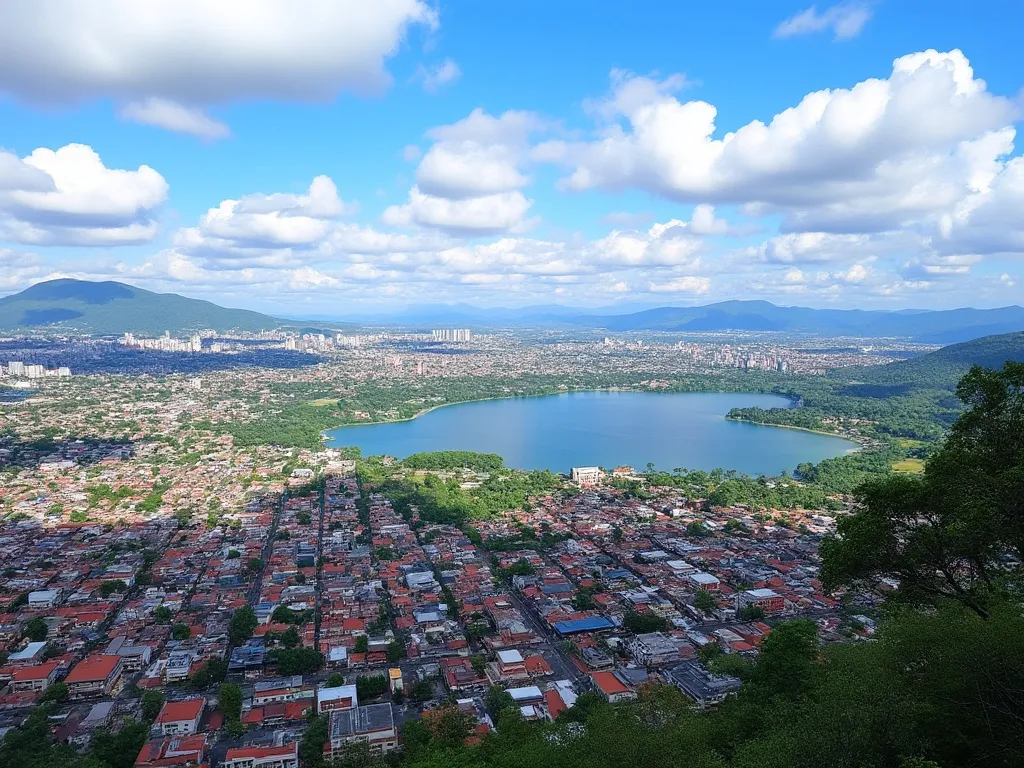
Manila, la capital de Filipinas, es una metrópolis bulliciosa con una rica historia y patrimonio cultural. Ubicada en la costa este de la bahía de Manila, la ciudad ha sido un importante centro de comercio, comercio y política durante siglos.
Información sobre Manila
| País | 🇵🇭 Filipinas |
| Población | 1.8 millones (estimación 2020) |
| Coordenadas | 14.59°N 120.98°E |
| Área | 42.88 km² (16.56 sq mi) |
| Clima | Clima de sabana tropical |
| Idioma | Inglés, Filipino (basado en Tagalo) |
| Moneda | Peso filipino (₱) |
| Zona horaria | Hora estándar de Filipinas (UTC+8) |
| Proximidad a otras ciudades importantes | Ciudad Quezón (10 km), Caloocan (15 km), Pasig (12 km) |
Antecedentes históricos de Manila
Manila fue fundada en 1571 por el conquistador español Miguel López de Legazpi y fue nombrada en honor a la planta Maynilà cercana, que era abundante en la zona. La ciudad fue un importante centro del Imperio Español en Asia y fue el centro de la Revolución Filipina contra España a finales del siglo XIX. Manila también fue el sitio de muchas batallas durante la Segunda Guerra Mundial y fue gravemente dañada por la guerra.
Ubicación geográfica de Manila
Manila está ubicada en la costa este de la bahía de Manila, en la isla de Luzón. La ciudad está situada en la Región de la Capital Nacional (NCR) y está delimitada por las ciudades de Ciudad Quezón, Caloocan, Pasig y Makati. La bahía de Manila, que está conectada con el Mar de China Meridional, proporciona un puerto natural para la ciudad.
Significado cultural de Manila
Manila es una ciudad culturalmente rica y diversa, con una mezcla de influencias españolas, americanas, chinas y malayas. La ciudad alberga muchos monumentos históricos, incluida la ciudad amurallada de Intramuros, que data del período colonial español. Manila también es conocida por su vibrante escena artística y cultural, con numerosos museos, galerías y lugares de espectáculos.
Importancia económica de Manila
Manila es el centro económico de Filipinas y es un importante centro de finanzas, comercio y comercio. La ciudad alberga muchas corporaciones multinacionales y es un destino popular para la inversión extranjera. Manila también es un importante centro de transporte, con dos aeropuertos internacionales y un puerto concurrido.
Datos interesantes sobre Manila
- Manila es la segunda ciudad más poblada de Filipinas, después de Ciudad Quezón.
- La ciudad tiene un clima de sabana tropical, con altas temperaturas y alta humedad durante todo el año.
- Manila alberga el barrio chino más antiguo del mundo, que se estableció en 1594.
- La ciudad es conocida por su vibrante cultura de jeepneys, con muchos jeepneys coloridos y decorados de manera ornamentada que sirven como transporte público.
Atracciones turísticas en Manila
- Intramuros, la ciudad amurallada de Manila, que data del período colonial español.
- Fuerte Santiago, un fuerte histórico que sirvió como prisión durante el período colonial español.
- Iglesia de San Agustín, una hermosa iglesia que data del siglo XVI.
- El Museo Nacional de Filipinas, que muestra la historia y cultura del país.
Conclusión sobre Manila
Manila, la capital de Filipinas, es una ciudad vibrante y culturalmente rica con una rica historia e importancia económica. Desde sus monumentos históricos hasta su vibrante escena artística y cultural, Manila tiene algo que ofrecer para cada tipo de viajero. Ya sea que estés interesado en la historia, la cultura o el entretenimiento, Manila es un destino de visita obligada en el sudeste asiático.
 Maputo
Maputo
 Mariehamn
Mariehamn
 Managua
Managua
 Manama
Manama